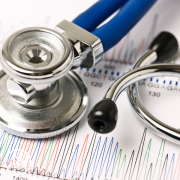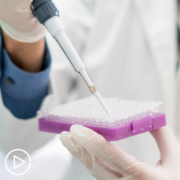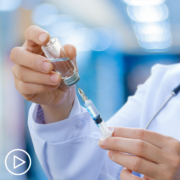What Role Does Telemedicine Play in Acute Myeloid Leukemia Care?
What Role Does Telemedicine Play in Acute Myeloid Leukemia Care? from Patient Empowerment Network on Vimeo.
In acute myeloid leukemia (AML) care, how can telemedicine be used? Watch as expert Dr. Catherine Lai shares different situations where telemedicine has served as a helpful tool and instances when in-person visits are optimal for patient care.
See More from Best AML Care No Matter Where You Live
Related Resources:

|

What Treatments Are on the Horizon for Acute Myeloid Leukemia Patients? |

|
Transcript:
Sasha Tanori:
My care team suggested a clinical trial for a new drug focusing on improving my lung function, fortunately, my lungs improved on their own. Dr. Lai, not every AML patient is offered a clinical trial as a care option, what advice do you have for AML patients who are seeking clinical trials, and what’s the best way to locate one?
Dr. Catherine Lai:
Yeah, so this is an area, a huge area of unmet need, I would say in general, across all oncology trials, and I think less than 10 percent of the patient population is on trials, there’s a lot of stigmas around clinical trials and are you getting…are you getting a drug that we don’t know what’s going to work, am I being…am I being tested? In oncology, I would say for the most part, we try to make trials where you’re being measured to the standard, so you’re getting the standard plus, or we’re trying not to…just in terms of doing what’s best for the patient, in general, I don’t offer trials to patients where I don’t think that there’s scientifically a rationale for those drugs, but to answer your question, the best place to look is on clinicaltrials.gov. That’s cumbersome. If you don’t know what you’re looking for, I can give you a lot of unnecessary information. There are a lot of other resources out there, The Leukemia & Lymphoma Society is a great resource. I know that they have online or people that you can talk to in terms of helping you direct specific clinical trials, I know depending on where you live in the country, there are other local new chapters, oncology chapters that we have that can help patients find…
And have access to clinical trials, and then I think the biggest thing is just if a patient is with the community oncologist, having enough education to say, can I have a referral to an academic institution where they can ask those questions and get that information, and local community oncologists are fantastic, but they see everything, they see breast cancer, they see one cancer where the academic centers were specialized where all I see is leukemia and MDS kind of acute leukemias. So, it’s just a different set of knowledge.












